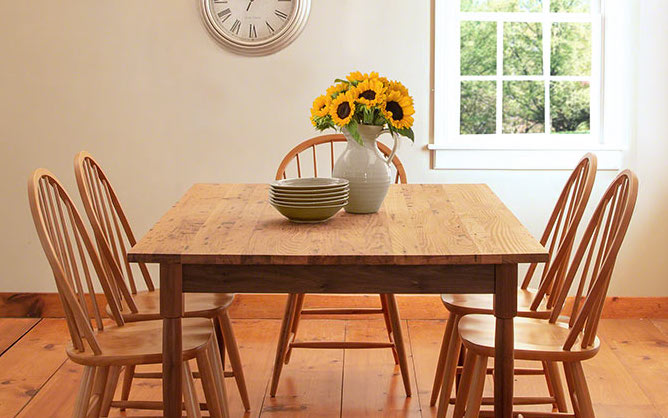Chestnut Wood
-
Chestnut wood doesn’t refer to wood from a single tree, but rather from a family of trees. The most well-known is the American chestnut, which can appear in various shades from a pale white through medium brown, which develops a reddish hue with age.
Once an absolute staple in American lives, the American chestnut was prized for its delicious nuts and impressive wood. Early pioneers appreciated that it was incredibly durable and one of the most rot-resistant options. Many pieces crafted more than 100 years ago are still in existence today. Plus, it grew in great abundance, earning it the title of “redwood of the east.”
-
Characteristics of Chestnut Wood
- Color: Pale white to light or dark brown
- Source: American Chestnut Tree (Castanea dentata (Marshall) Borkh.)
- Durability: 540 lbf (2,400 N) on the Janka scale
- Cost: $15-20 per square foot (reclaimed)
- Common Uses: Furniture, Flooring, Art
What Color is Chestnut Wood?
The heartwood, or innermost part of an American chestnut tree, produces a light to medium brown wood which develops a reddish hue as it ages. The sapwood, or outermost part, can also be light brown or may appear as a pale white color.
Why Does Chestnut Wood Change Colors Over Time?
In the case of wormwood, it’s due to insect activity, disease, and exposure to the elements. However, with pieces crafted from disease-free trees, the darkening and reddish hue comes from exposure to UV rays and oxygen. This is seen in most hardwoods. Darker varieties will become lighter while light varieties will darken.
What are the Common Uses of American Chestnut Wood?
Pioneers used American chestnut wood for virtually everything. Homes, barns, and floors were constructed from it. Much of today’s reclaimed wood comes from these purposes. It was also used to make shingles, telephone poles, fences, piers, furniture, and boats. Because it’s so rare nowadays, it tends to get used with more care. Reclaimed wood and wormwood is used mostly in furniture and cabinetry, though if someone has an ample budget, it is used in flooring too.
Of course, it wasn’t just the wood early settlers prized. Lyrics from the Christmas Song mention “Chestnuts roasting on an open fire,” a piece of Americana. The nuts were soft, sweet, and delicious; unlike any chestnut trees currently produce. The tannins, which gave the trees their superior rot-resistance, was also extracted from the bark and used from tanning leather.
What Does the Grain Pattern of Chestnut Wood Look Like?
Generally speaking, chestnut is straight-grained, though some pieces are spiral or interlocked.
Is Chestnut a Hardwood or Softwood?
Hardwood and softwood refer to the type of tree the wood comes from. Hardwood comes from dicot trees and softwood comes from gymnosperm trees. Chestnut is part of the dicot group, along with cherry, oak, maple, ash, and walnut, which makes them all hardwoods. This is as opposed to varieties such as fir and cedar, which are softwoods.
-
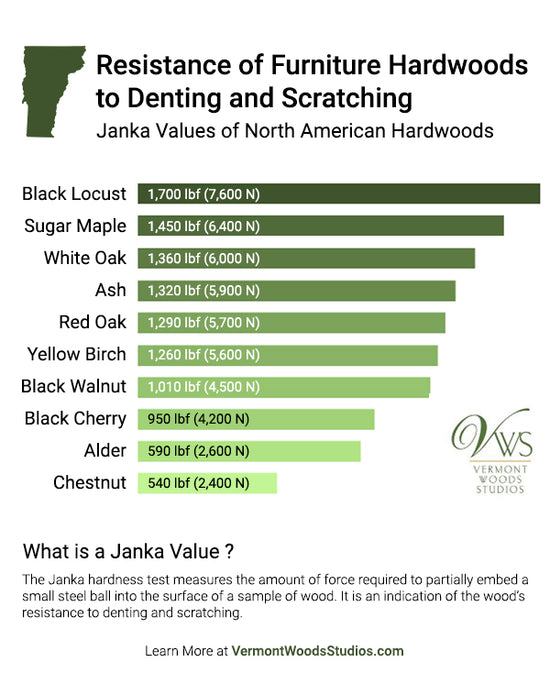
-
How Dense/Hard is Chestnut Wood?
The Janka Scale is used to provide wood with hardness values. During testing, a small steel ball, like a BB, is pressed into the wood until its embedded halfway, and the amount of force needed to do so is measured. It takes 540 pounds of force to do this with chestnut wood, so it’s rated 540 lbf or 540 Janka.
Types of Chestnut Trees
Here in the United States, most chestnut wood still comes from the American chestnut tree, also known by the scientific name Castanea dentata (Marshall) Borkh. However, new healthy trees are not being cut down, and so most new chestnut furniture is fashioned from reclaimed wood or wormwood.
Dwarf chestnut trees, also called Allegheny chinquapin, American chinquapin, or by the scientific name Castanea pumila, are native to the southeastern United States. They share many properties with the American chestnut, such as superior workability and rot-resistance, but they’re also much smaller. Because of this, they don’t get much commercial use, though their wood may occasionally be used by artisans.
Chinese chestnut trees, which were responsible for bringing chestnut blight to the United States, and Japanese Chestnut trees, are both resistant to the fungus and grow well throughout the country. However, they are mostly grown for their nuts. The wood is rarely used because it doesn’t share the traits of the American chestnut.
On the other side of the ocean, European or sweet chestnut trees are prized for lumber. Some of these trees have been transferred to the United States as well, but they don’t grow in abundance and are not routinely used here. Occasionally, a piece of furniture made in America may come from a European chestnut tree, but more often than not, a piece crafted with authentic European chestnut wood will have been made in the UK.
Is Chestnut Wood Eco-Friendly? Are ChestnutTrees Endangered?
The American chestnut tree is on the brink of extinction. Scientists are working hard to reengineer it with traits from the Chinese chestnut to give it resistance to chestnut blight. They’re on the right track, but haven’t made it there just yet. There are serious conservation efforts underway too, including protections from US federal and state governments.
Still, chestnut wood, unless reclaimed, is not an especially eco-friendly solution for wood furniture, given the increasing rarity of american chestnut trees.
Alternatives to Chestnut Wood
Wormwood and reclaimed wood are ideal for those who appreciate the rustic look, but for those who prefer a more polished appearance, finding an alternative to American chestnut wood is essential. In these cases, oak is a great option. The grain is similar and it naturally comes in a variety of hues. Black walnut can also be a great option too. It doesn’t look the same at all, but it works quite well in colonial-style homes.
Read More on the Blog
-
Hardwood Furniture Buyer's Guide, Part 1
Read MoreThis hardwood dining table, buffet and chair set is made of American black cherry wood. Mortise and tenon joints are used as well as dovetails in the drawers of the buffet.
-
5 Wood Sourcing Certifications
Read MoreSustainable wood sourcing is essential to protecting forests and conserving resources for future generations. By understanding what each designation stands for, you can make informed decisions when purchasing.
-
FSC Certified Wood: Everything You Need to Know
Read MoreSupporters of the sustainable American-made furniture movement prefer the use of domestic wood over the use of imported FSC certified wood.
-
Wood Furniture Buyer's Guide
Read MoreShopping online for high quality wood furniture requires some research. After all, fine furniture is a big investment.
-
5 Exotic Hardwoods to Avoid & Why
Read MoreWood is generally an earth friendly material because it is renewable, meaning it grows back and isn’t finite like oil, metals, or even rock. But not all species of wood are inherently sustainable.
Other Types of Wood Species
-
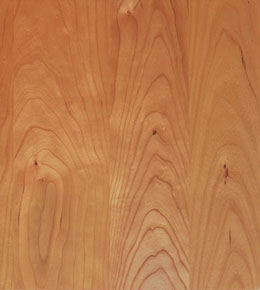
Cherry Wood
More About Cherry -
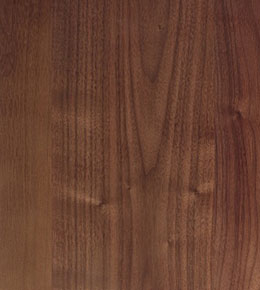
Walnut Wood
More About Walnut -
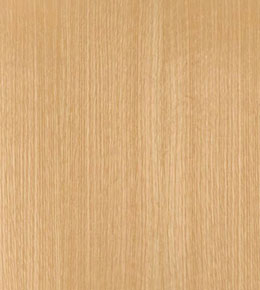
Oak Wood
More About Oak -
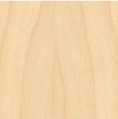
Maple Wood
More About Maple

